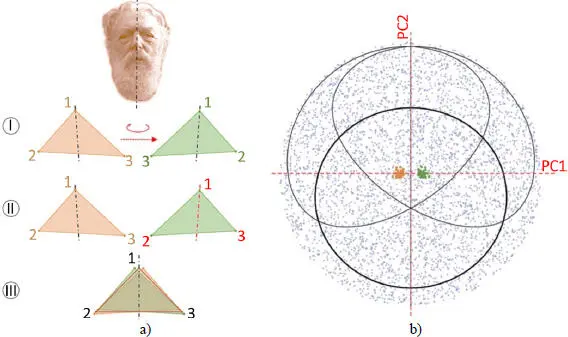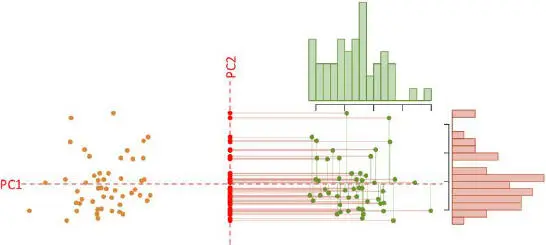Systematics and the Exploration of Life
Здесь есть возможность читать онлайн «Systematics and the Exploration of Life» — ознакомительный отрывок электронной книги совершенно бесплатно, а после прочтения отрывка купить полную версию. В некоторых случаях можно слушать аудио, скачать через торрент в формате fb2 и присутствует краткое содержание. Жанр: unrecognised, на английском языке. Описание произведения, (предисловие) а так же отзывы посетителей доступны на портале библиотеки ЛибКат.
- Название:Systematics and the Exploration of Life
- Автор:
- Жанр:
- Год:неизвестен
- ISBN:нет данных
- Рейтинг книги:3 / 5. Голосов: 1
-
Избранное:Добавить в избранное
- Отзывы:
-
Ваша оценка:
- 60
- 1
- 2
- 3
- 4
- 5
Systematics and the Exploration of Life: краткое содержание, описание и аннотация
Предлагаем к чтению аннотацию, описание, краткое содержание или предисловие (зависит от того, что написал сам автор книги «Systematics and the Exploration of Life»). Если вы не нашли необходимую информацию о книге — напишите в комментариях, мы постараемся отыскать её.
Systematics and the Exploration of Life — читать онлайн ознакомительный отрывок
Ниже представлен текст книги, разбитый по страницам. Система сохранения места последней прочитанной страницы, позволяет с удобством читать онлайн бесплатно книгу «Systematics and the Exploration of Life», без необходимости каждый раз заново искать на чём Вы остановились. Поставьте закладку, и сможете в любой момент перейти на страницу, на которой закончили чтение.
Интервал:
Закладка:

Figure 1.4. Morphometric analysis of object symmetry. For a color version of this figure, see www.iste.co.uk/grandcolas/systematics.zip
COMMENT ON FIGURE 1.4.– a) In the case of bilateral symmetry (the shape is likened to a triangle for easier visualization), the original structure (orange) has a plane of symmetry. A copy of the structure is generated (the bilateral symmetry group includes two isometries: identity and reflection), reflected (I) and relabeled to ensure the correspondence between homologous landmarks (II). The original and reflected structures of all the individuals in the sample are then superimposed by the Procrustes method. b) Each individual is then defined by two points in the tangent space corresponding to each of its copies (including the original). The relative position of the points and clouds of points representing the two sides (orange and green here) describes the degree of deviation of perfect bilateral symmetry at the individual and sample levels. A principal component analysis not only allows the visualization of the tangent space with a reduced number of dimensions, but also allows the separation of the symmetric and asymmetric components.
In both cases, the statistical exploration of the shape space allows the separation of the symmetric and asymmetric components of the shape variation. However, object symmetry has a specificity. It has been shown that the different symmetric and asymmetric components occupy complementary and orthogonal subspaces of the shape space (Kolamunnage and Kent 2003, 2005). Mathematically, the shape space is the direct sum of the symmetric and asymmetric subspaces. These components are easily separable and their morphological meaning can be interpreted by principal component analysis ( Figure 1.5).

Figure 1.5. Morphometric analysis of object symmetry and partition of the symmetric and asymmetric components. For a color version of this figure, see www.iste.co.uk/grandcolas/systematics.zip
COMMENT ON FIGURE 1.5.– The arrangement of the copies of the symmetric structure, generated according to its symmetry group, is such that a principal component analysis automatically separates the symmetric and asymmetric components. Here, we consider a structure similar to a triangle with a plane (axis) of symmetry. The tangent space thus has two dimensions (see Figure 1.2). We observe two clouds of points corresponding to the shapes of the original structures (orange) and to the shapes of the reflected and relabeled structures (green). The principal component analysis defines two main components, which are perfectly separated: the symmetric component, distributed along PC2 (red histogram) and describing the inter-individual variation, obtained by averaging the pairs of points corresponding to the same individual; the asymmetric component, distributed along PC1 (green histogram) and describing the intra-individual variation, obtained by calculating the difference between its original or reflected shape (orange or green points) and its symmetric shape (red points), for each individual.
1.7. Some examples of applications
Bilateral symmetry of bilaterians was the first type of symmetry to be studied using the tools of geometric morphometrics (especially with Drosophila and the mouse as models). These studies are based on the methodological extension of fluctuating asymmetry analyses (Leamy 1984; Palmer and Strobeck 1986), originally based on the measurement of right–left differences of simple traits (linear measurements), to the study of shape as a highly multidimensional phenotypic trait (Klingenberg and McIntyre 1998; Mardia et al . 2000). Leamy et al . (2015), for example, using the fluctuating asymmetry in the size and shape of mouse mandibles to explore the genetic architecture of developmental instability. Quantitative trait locus (QTL) analysis underlines the epistatic genetic basis of fluctuating asymmetry, and suggests that the genes involved in the developmental stability of the mandible are the same as those controlling its shape and size.
The generalization of this morphometric framework to any type of symmetry has extended its scope to a wide variety of taxa and, in particular, to flowering plants (Savriama and Klingenberg 2011; Savriama 2018). Corolla symmetry is indeed involved in multiple aspects of the evolution of flowering plants, and morphometrics allows the statistical testing of adaptive hypotheses. For example, in Erysimum mediohispanicum , Gómez and Perfectti (2010) have shown the impact of the shape of the corolla (and its deviation from the expected symmetry) on the selective value of the plant: pollinators (bees, bombyliids) significantly prefer flowers with bilaterally symmetric corollas (zygomorphism).
The decomposition of the variation into symmetric and asymmetric components can also be relevant in systematics. For example, Neustupa (2013) demonstrated the possible discrimination of different species of Micrasterias (single-cell green algae of the Desmidiales order) according to the share of symmetric and asymmetric components, relative to the two orthogonal planes of symmetry that characterize the cell shape.
Measures of fluctuating asymmetry are also used to infer patterns of developmental integration, in other words, the modular organization of phenotypes resulting from differential interactions between developmental processes (Klingenberg 2008).
Savriama et al . (2016) quantified the fluctuating “translational” asymmetry in order to assess the developmental cost of segmented modular organization in eight species of soil centipedes (Geophilomorpha). The results did not show any impact of the degree of modularity (number of segments) on developmental precision, rejecting the hypothesis of a “cost” of modularity.
Finally, the architecture of some organisms or organic structures may combine several hierarchically arranged patterns of symmetry. This is, for example, the case for Aristotle’s lantern, the masticatory apparatus of sea urchins, which, in regular sea urchins, combines bilateral and rotational symmetries (Savriama and Gerber 2018). The lantern exhibits the fifth-order rotational symmetry that is typical of echinoderms, and results from the repetition of a composite skeletal unit (hemipyramids + epiphyses) with bilateral symmetry. Analysis of the symmetric architecture of the lantern revealed a torsion (directional asymmetry) of the hemipyramids, contributing to the functioning of the lantern, and patterns of fluctuating asymmetry reflecting the spatialization of the skeletal precursors during the morphogenesis of the lantern.
1.8. Conclusion
The symmetry of biological forms, initially an object of curiosity and fascination, has become an important research topic in several branches of biological sciences in recent decades. The understanding of the developmental processes involved in the morphogenesis of symmetric phenotypes is a major issue in developmental and evolutionary biology (see Citerne et al . (2010), for example). In parallel to these genetic and developmental approaches, morphometrics has established a rigorous methodological framework for the analysis of symmetric shapes. Beyond the characterization of the symmetry of shapes, these approaches also quantify the deviations from the symmetric expectation. Their statistical analysis allows inferences to be made with regards to the architecture of complex phenotypes (genetic modularity, developmental modularity) and their variational properties (evolutionary modularity, evolvability). Coupled with molecular and developmental approaches, the recent generalization of the morphometric framework to all types of symmetry thus opens up new ways to describe, study and understand the origin and evolution of symmetries in the living world.
Читать дальшеИнтервал:
Закладка:
Похожие книги на «Systematics and the Exploration of Life»
Представляем Вашему вниманию похожие книги на «Systematics and the Exploration of Life» списком для выбора. Мы отобрали схожую по названию и смыслу литературу в надежде предоставить читателям больше вариантов отыскать новые, интересные, ещё непрочитанные произведения.
Обсуждение, отзывы о книге «Systematics and the Exploration of Life» и просто собственные мнения читателей. Оставьте ваши комментарии, напишите, что Вы думаете о произведении, его смысле или главных героях. Укажите что конкретно понравилось, а что нет, и почему Вы так считаете.












